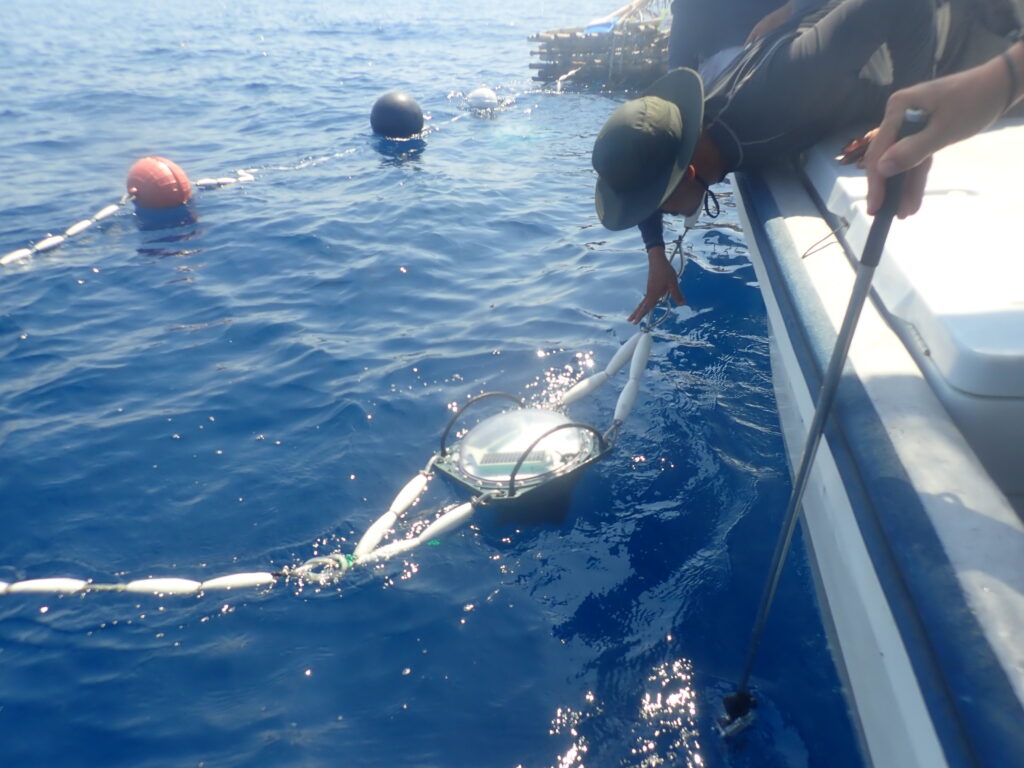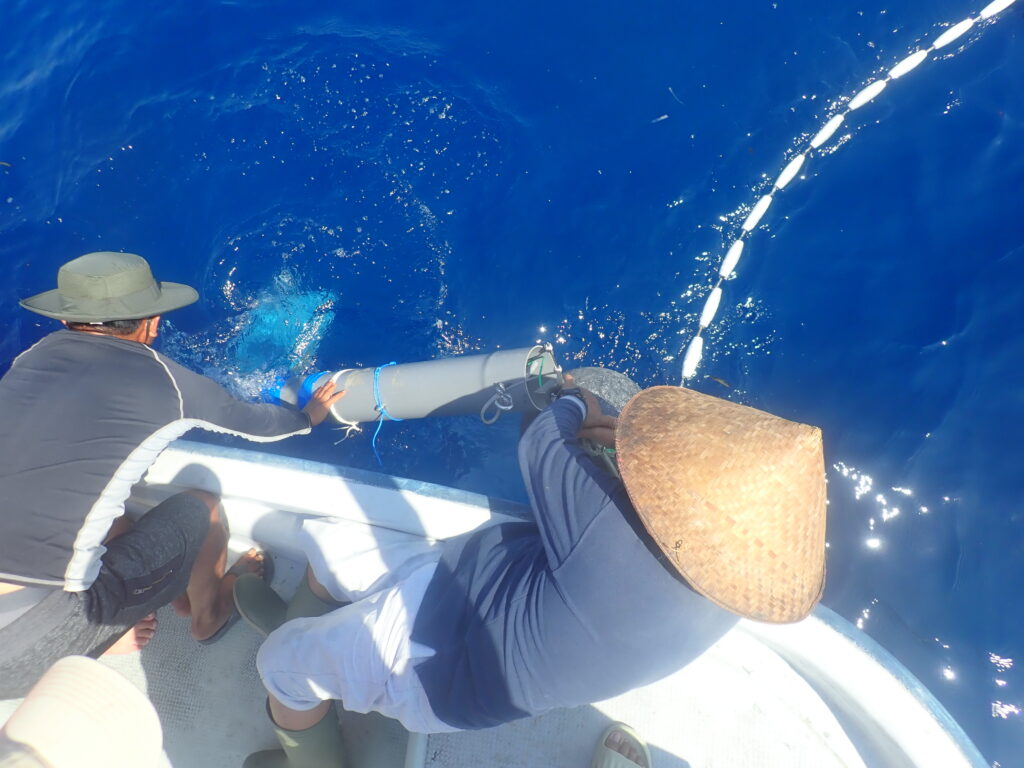OBJECTIVE
The objective is to detect the biomass of FAD-associated species.
METHODOLOGIES
The experimental AFAD will be instrumented using two active acoustics technologies: (1) Wideband Autonomous Transceiver WBAT Simrad EK80 equipped with two split-beam transducers (frequencies: 38 kHz and 200 kHz) and (2) Echosounder buoys M3I+ (Marine Instruments) (frequencies: 150 kHz and 200 kHz). The WBAT is a self-contained scientific echosounder that allows the detection of single targets and target-strength estimation, allowing for species identification (when the strength/size of individuals is known) and individual counts. The M3I+ buoy is a low-cost commercial buoy commonly used by fishers to detect tuna aggregations at FADs. Data recorded using the M3I+ buoys will be analyzed using the machine learning approaches. For the WBAT data we will use the MOVIES3D software for the construction of echograms.
EXPECTED OUTPUT
We will identify of fish presence at different times and depths.



